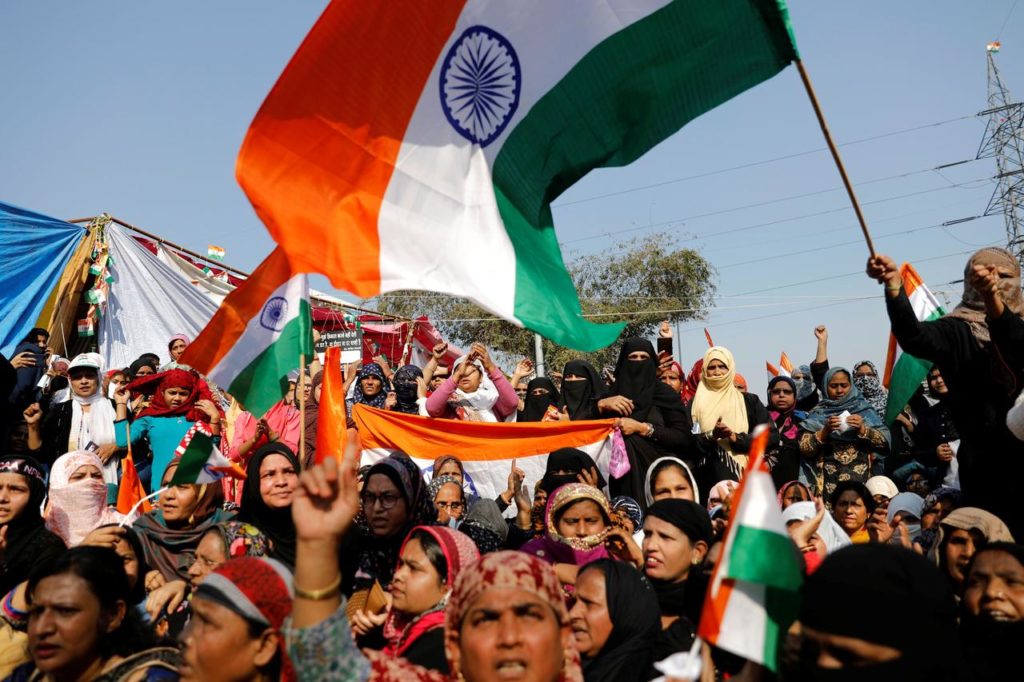Use Of Facial Recognition Tech During Protests Causes Stir
Feb 17, 2020 | Pratirodh Bureau
Demonstrators shout slogans during a protest against a new citizenship law, in Shaheen Bagh area of New Delhi on February 16, 2020
When artist Rachita Taneja heads out to protest in New Delhi, she covers her face with a pollution mask, a hoodie or a scarf to reduce the risk of being identified by police facial recognition software.
Police in the Indian capital and the northern state of Uttar Pradesh – both hotbeds of dissent – have used the technology during protests that have raged since mid-December against a new citizenship law that critics say marginalises Muslims.
Activists are worried about insufficient regulation around the new technology, amid what they say is a crackdown on dissent under Prime Minister Narendra Modi, whose Hindu nationalist agenda has gathered pace since his re-election in May.
“I do not know what they are going to do with my data,” said Taneja, 28, who created a popular online cartoon about cheap ways for protesters to hide their faces. “We need to protect ourselves, given how this government cracks down.”
Critics also accuse authorities of secrecy – highlighting, for instance, that the software’s use during Delhi protests was first revealed by the Indian Express newspaper.
India’s home ministry did not immediately respond to requests for comment on facial recognition technology.
Modi’s government has rejected accusations of abuse during demonstrations, and accused some protesters of stoking violence.
A spokesman for his ruling Bharatiya Janata Party had no immediate comment on concerns over the use of the technology and referred questions to the government.
But police said worries about facial recognition were unwarranted.
“I’m only catching targeted people,” said Rajan Bhagat, a deputy commissioner of police at Delhi’s Crime Records Office. “We don’t have any protesters’ data, nor do we plan to store it.”
He declined to give details of potential arrests, however.
When it comes to surveillance, India trails far behind neighbouring China. New Delhi, for example, has about 0.9 CCTV cameras for every 100 people, versus about 11.3 per 100 in China’s commercial hub of Shanghai, a 2019 report by PreciseSecurity.com showed.
The Delhi Police use Indian startup Innefu Labs’ facial recognition software AI Vision, which also includes gait and body analysis.
“If somebody is throwing stones at a police officer, doesn’t he have a right to take a video and identify him?” said Innefu co-founder Tarun Wig, 36.
Police in about 10 Indian states use Innefu products, Wig said.
Financial fraud analytics are among the services provided by Innefu, which published a social media analysis in January that concluded much criticism of the new citizenship law came from archenemy Pakistan to “destabilize the harmony” of India.
The company is representative of homegrown artificial intelligence startups tapping into booming demand for facial biometrics in India, in part thanks to their testing on Indian faces and more affordable prices.
A few established foreign firms, such as Japanese telecommunications and IT giant NEC Corp, also operate in India, where the market is expected to grow from about $700 million in 2018 to more than $4 billion by 2024, TechSci Research said in a report.
